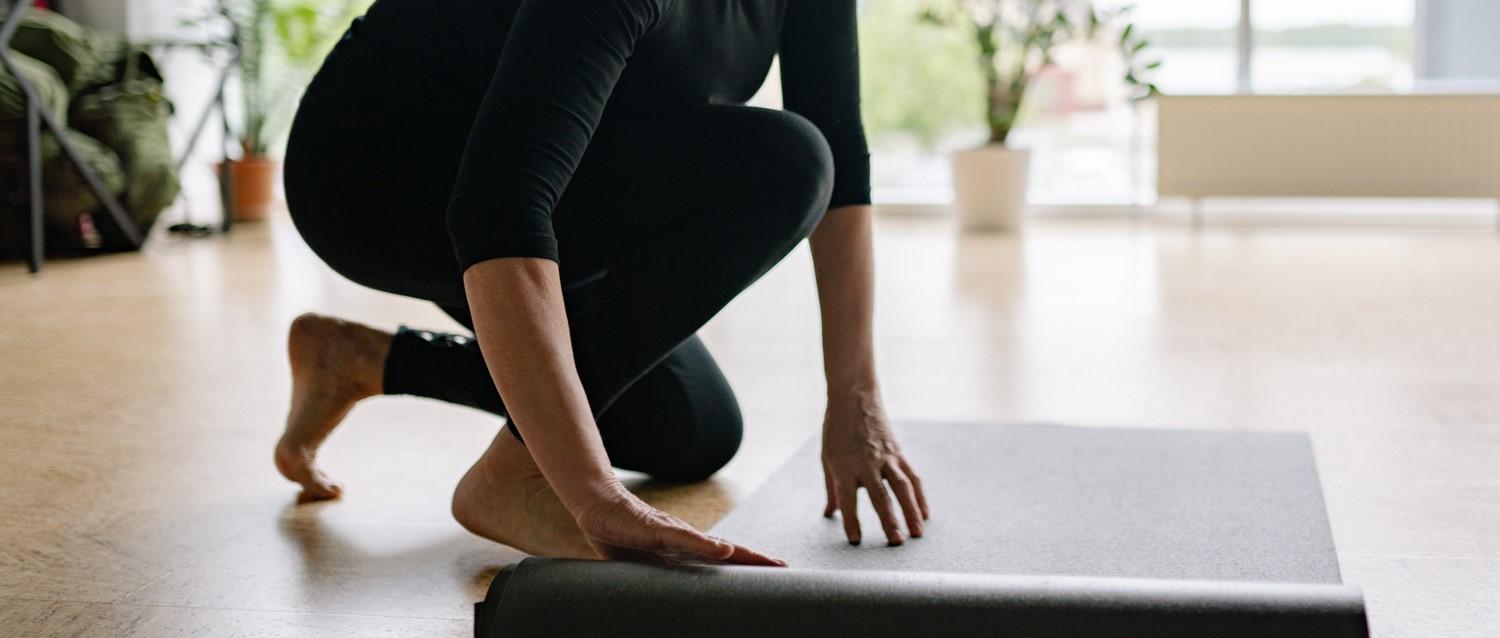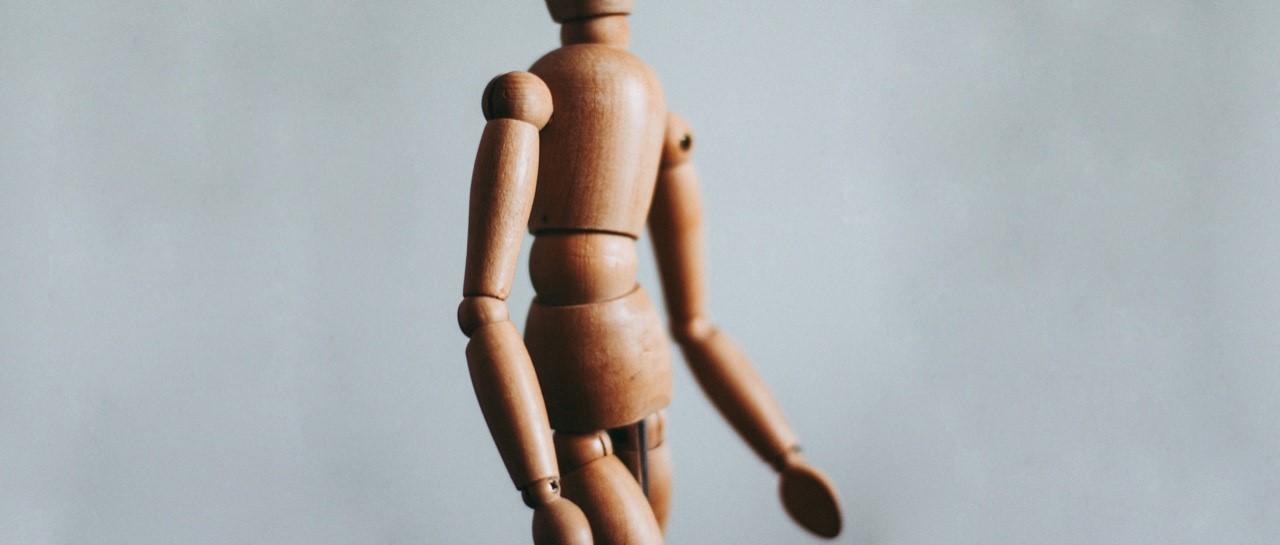
How to ease joint pain during the menopause
Peer reviewed by Dr Krishna Vakharia, MRCGPLast updated by Amberley DavisLast updated 30 Apr 2024
Meets Patient’s editorial guidelines
- DownloadDownload
- Share
- Language
- Discussion
Joint pain is one of many possible menopause symptoms. Lifestyle adjustments, including changes to your diet and exercise routine, can ease aches and pains and help to prevent osteoarthritis and osteoporosis. There are also other treatment options, including hormone replacement therapy (HRT), over-the-counter medicines, and menopause supplements.
In this article:
Continue reading below
What causes menopause joint pain?
It may be a natural part of the female ageing process, but menopause can bring discomfort and pain. Learning how to manage your symptoms can make a big difference in your quality of life during this phase.
From hot flushes and vaginal dryness to disturbed sleep and anxiety, there are lots of possible symptoms that may make daily activities more challenging. These noticeable changes reflect the significant change that's taking place in your body, as your sex hormone levels fluctuate and cause your ovaries to lose their reproductive function.
Oestrogen, the hormone that plays a key role in regulating your menstrual cycle, helps to decrease inflammation and keep the joints lubricated. During the menopause and perimenopause, oestrogen levels decrease and as a result, some women experience joint pain.
Kirsty Lee, physiotherapy lead and pelvic health specialist at Ascenti says: "Some studies say that a decrease in oestrogen not only reduces natural bone density but also affects muscle strength and tendon health. In turn, this may result in longer injury recovery times1."
Menopause joint pain, osteoarthritis, or osteoporosis?
Menopause joint pain can affect joints all over your body and can also result in longstanding injuries becoming more painful.
According to Lee, menopause joint pain most commonly affects the following areas:
Neck.
Shoulders.
Spine.
Elbows.
Hands.
Knees.
"As oestrogen continues to decrease, joints can become more inflamed and painful, resulting in an increased risk of your bones thinning (osteoporosis) or your joints becoming inflamed (osteoarthritis)," Lee says.
When it could be osteoarthritis
Osteoarthritis is more likely to occur in people over 50 years, around the same time that many women start menopause. While joint pain and stiffness around the time of menopause does not always indicate osteoarthritis, it can be a symptom. Osteoarthritis joint pain is more likely to occur in the knees, hips, lower spine, fingers, and thumbs.
When it could be osteoporosis
Being over 40 and going through menopause increases your chances of rapid bone loss, which may lead to osteoporosis. Unlike menopause joint pain and osteoarthritis, you usually won't feel pain unless you break a bone. Your doctor may wish to test you for osteoporosis if you are menopausal and have had a bone breakage from a minor injury.
Is back pain a symptom of menopause?
Back pain, and particularly lower back pain, can become a problem for many women2 as they go through menopause. One survey of 5,325 women found that postmenopausal women were twice as likely to report lower back pain as premenopausal women3.
Your spine is made up of multiple joints, including facet joints that allow movement in your back. Decreased oestrogen results in greater inflammation of these joints and also causes your spinal (intervertebral) discs to wear down.
Does menopause cause knee pain?
Menopause joint pain of the knees is also very common. This may not be surprising, given that your knee is one of your largest joints, connecting and supporting your thighbone (femur), kneecap (patella), shinbone (tibia), and calf bone (fibula). Your knees are subject to a great deal of pressure and wear throughout your life as they support a large portion of your weight.
Easing menopause joint pain
There are both medical and non-medical forms of pain management that are proven to significantly reduce menopause joint pain. This can start with simple routines in the home.
Home treatments include:
Gentle stretching exercises.
Using ice packs on sore areas.
Using hot water bottles on sore areas.
Having hot baths.
Practising relaxation techniques and mindfulness.
Diet for menopause joint pain
Your diet is important in both preventing and managing health issues, and menopause joint pain is no different. You should eat a healthy, balanced diet that is high in fibre with lots of fruit, vegetables and wholegrain foods..
Eating the right foods can improve a range of menopause symptoms. The key is to consume lots of nutrients from various food groups.
The foods that most directly impact joint and bone health include:
Dairy products (milk, cheese, yoghurt) - contain calcium, potassium, phosphorus4, magnesium and vitamins D and K.
Oily and tinned fish (salmon, sardines, mackerel) contain vitamin D and omega-3 fatty acids, and tinned fish with bones are high in calcium.
Richly coloured fruits and green leafy vegetables (cherries, blueberries, kale) - contain vitamin C5.
Animal and non-animal protein - chicken, egg, beans6.
Exercise for menopause joint pain
If you experience menopause joint pain, you may be tempted to limit your movements. It might feel counter-intuitive at first, but the experts recommend staying as physically active as possible.
Lee says: "Move! Motion is lotion, and if this is managed and progressed slowly it can be an effective tool for pain management."
Why: "Unfortunately, weight gain is also a common side effect of menopause, and increased weight can have a detrimental effect on joint and muscle pain due to increased load. Therefore, weight management is a key part of managing joint pain."
What: "There are lots of forms of exercise that can help with pain as well as other menopause symptoms. An effective 'menopause friendly' programme should consist of endurance, strength/resistance, and balance exercises."
Yoga and Pilates - for muscles strength, flexibility, and strengthening of your pelvic floor muscles (which can weaken during menopause).
Weight training and higher impact activities - improve bone density but need to be closely monitored by a trained personal trainer or a physiotherapist.
Be active and enjoy the sports you take part in.
Why: "Weight-bearing exercises will strengthen your musculoskeletal system which will help to alleviate joint aches and pains, protect brittle bones, and may prevent osteoporosis."
What:
Walking.
Yoga.
Pilates.
Ivana Daniell, movement and posture expert, says: "The right choice of exercise programme can be of great support during the time of menopause, both physically and mentally. Be aware of not pushing your body too hard, especially during this delicate hormonal transition."
Why: "When the female body is pushed too hard, it goes into adrenal stress and this creates havoc in the incredibly engineered yet delicate hormonal balance."
What: "Quality of movement versus quantity is paramount. Regular and consistent exercise is better than sporadic visits to the gym that make you exhausted. Choose activities that uplift your mood and practise 2-3 times per week in addition to your daily 30-40 minute walk."
Dancing.
Walking in nature.
Your favourite sport.
Yoga.
Pilates.
Pelvic floor exercises - every day for a couple of minutes.
Core strengthening exercises.
Medical interventions for menopause joint pain
You may also use over-the-counter medicines to help reduce inflammation and painful joints. These include common painkillers and anti-inflammatory gels and medication. Your pharmacist will be able to advise.
Remember, hormone replacement therapy (HRT) is widely accepted as the most effective method for managing the symptoms of menopause. By restoring the oestrogen levels you lose during menopause, there is strong evidence that HRT can ease menopause joint pain alongside a whole host of other symptoms7.
Supplements for menopause joint pain
There are also several menopause herbal remedies and supplements on the market. Biomedical gerontologist Dr Marios Kyriazis says that supplementation should be used alongside - and not as a substitute for - healthy lifestyle changes:
"The most effective lifestyle changes include switching to an anti-inflammatory diet, incorporating light to moderate physical activity, practising breathing and relaxation exercises on a daily basis, and improving sleep patterns. Under these conditions, herbal blends and anti-inflammatory supplements work best."
Kyriazis recommends supplementing curcumin, the active ingredient in turmeric.
Continue reading below
Further reading
1. Chidi-Ogbolu et al: Effect of Estrogen on Musculoskeletal Performance and Injury Risk
2. Kozinoga et al: Low back pain in women before and after menopause
3. Adera et al: Premature menopause and low back pain. A population-based study
Patient picks for Menopause and HRT

Hormones
Should you be worried about postmenopausal bleeding?
You've endured the hot flushes and the mood swings. You've survived the heavy, irregular bleeding. Once you come out the other side, maybe the menopause isn't so bad - after all, you don't have to put up with periods every month. But then you start bleeding again, and you're not sure if it's normal.
by Dr Sarah Jarvis MBE, FRCGP

Hormones
Poor social life linked to bone loss in postmenopausal women
Negative friendships and social relationships have been linked to bone loss in postmenopausal women in a new study.
by Milly Evans
Article history
The information on this page is peer reviewed by qualified clinicians.
Next review due: 30 Apr 2027
30 Apr 2024 | Latest version
1 Apr 2022 | Originally published
Authored by:
Amberley Davis

Ask, share, connect.
Browse discussions, ask questions, and share experiences across hundreds of health topics.

Feeling unwell?
Assess your symptoms online for free
Sign up to the Patient newsletter
Your weekly dose of clear, trustworthy health advice - written to help you feel informed, confident and in control.
By subscribing you accept our Privacy Policy. You can unsubscribe at any time. We never sell your data.